Learn to create PowerPoint presentation or Google Slides based on an external URL. Learn how to utilize online articles, websites, PDFs, and other resources effectively, with or without ChatGPT, Claude, or Copilot.
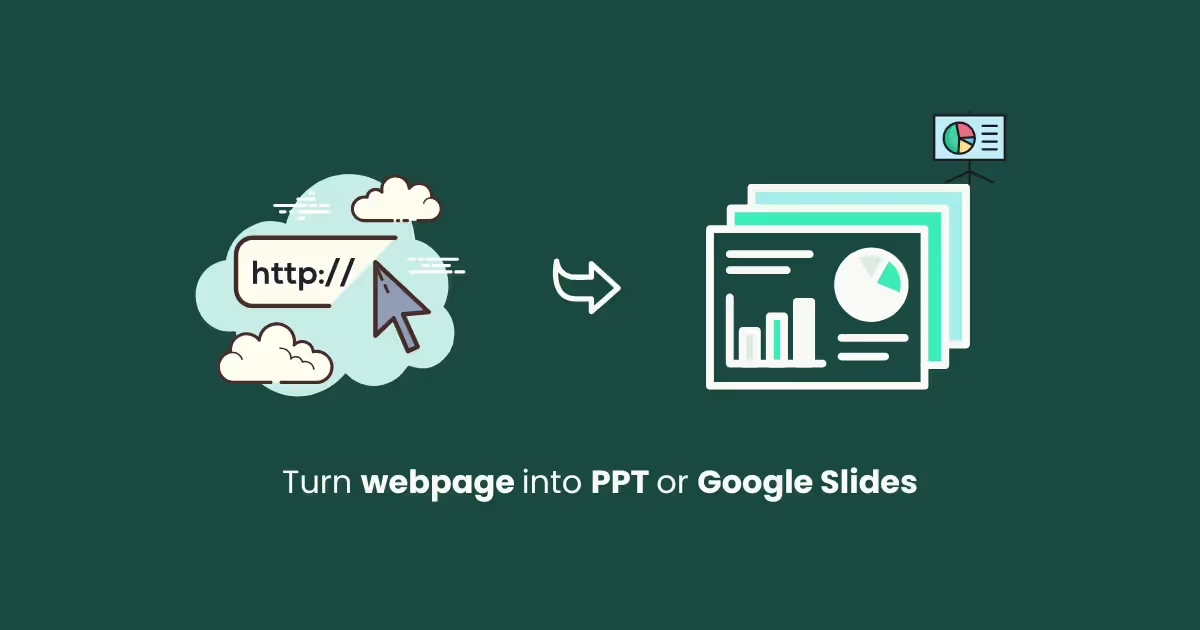
You’ve found a great online article or website, packed with ideas your students need to learn. So naturally, you want to teach that article in classroom. But article are mostly long, boring and filled with jargon. So, you thought why not convert this into a presentation and that’s where things fall apart.
This is exactly why more and more teachers are looking for ways to AI-generate presentations from articles, websites, PDFs, and online resources, without losing accuracy or instructional clarity.
In this guide, you’ll learn three practical ways to create presentations from any online article using AI, ranked by effectiveness.
Whether you want a quick slide deck or a fully editable, classroom-ready presentation, these methods will help you go from link → slides in minutes, not hours.

Let’s discuss top three ways to generate presentation with the help of AI:
This is the easiest, quickest, and smartest way, and it’s free!
Monsha's AI presentation slides maker is great because it reads external links for you and handles the slide layouts and formatting for the entire presentation, so you don’t have to worry about writing prompts or dealing with all the details.
You can also use a file to base your slides on, or pull in a YouTube video as sources for your presentation content.
You can go beyond boring bullet points and include a variety of layouts in your slides, with the option to align them with specific standards. Plus, you can export it in the platform or format that works best for you, including Google Slides and PowerPoint.
Head over to Monsha and sign up or log in. It takes just two clicks.
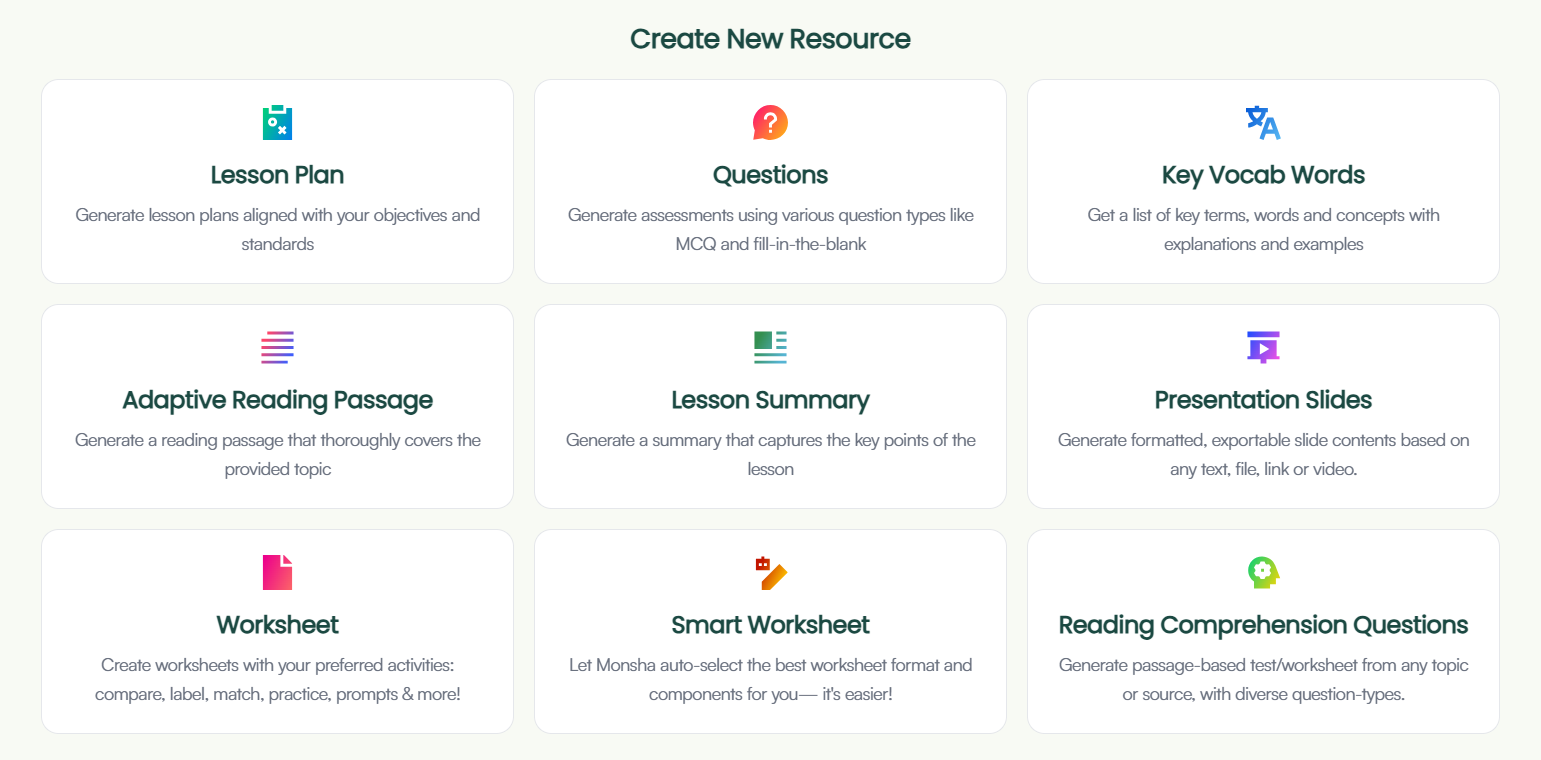
You’ll see everything Monsha can help you create worksheets, questions, lesson plans, reading passages, and more.
This is where you have to add the PDF or URL of the article that you want to base your presentation on.
You can also paste the text from the article.
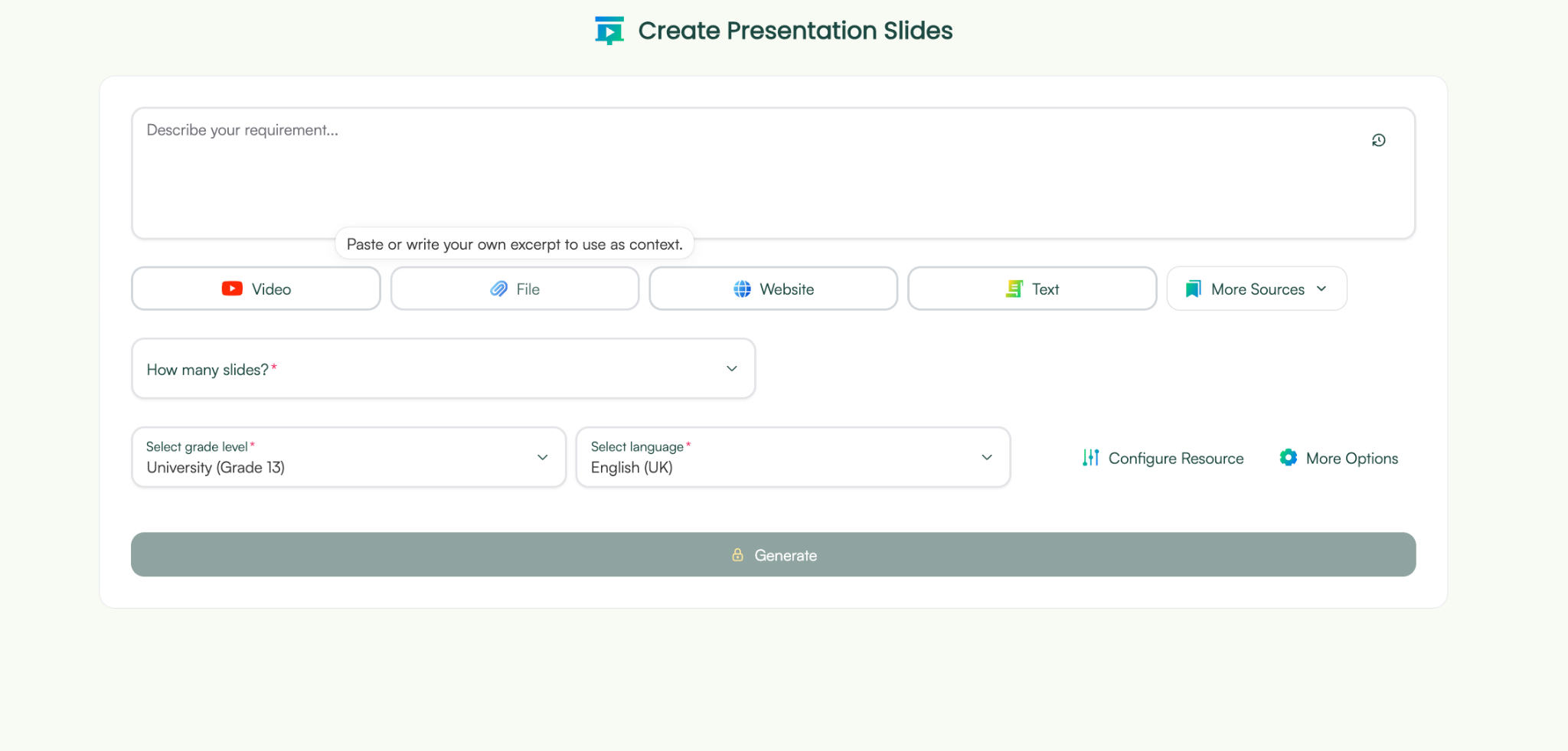
If you didn’t connect a course earlier, Monsha will ask for:
This helps the AI presentation generator create slides that match your students.
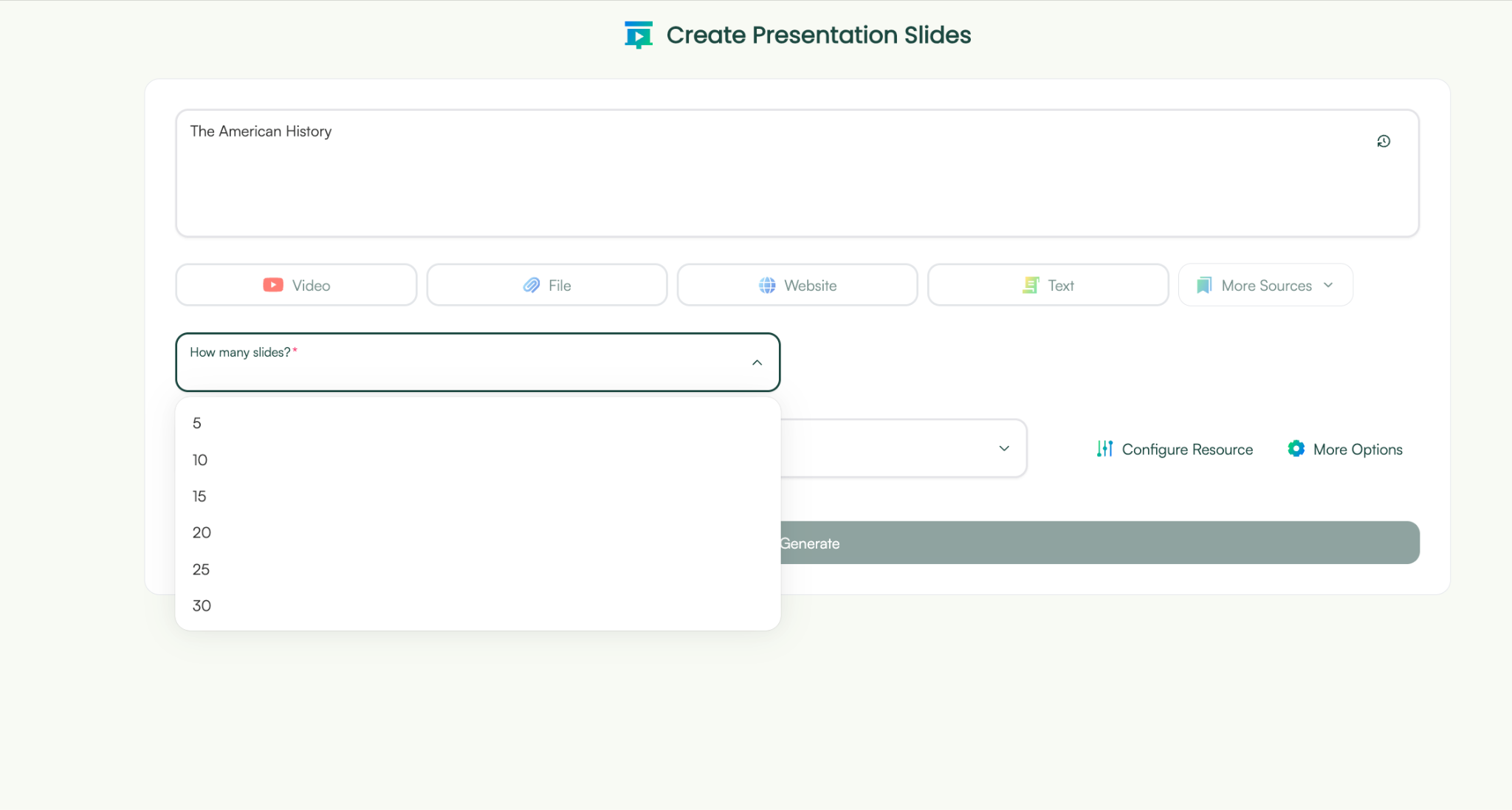
Now choose the number of slides. Whether you want a short intro deck or a full classroom presentation, this controls how detailed your AI-generated slides will be.

You can fine-tune your slides even more by choosing:
This helps when you’re differentiating content or planning assessments.
After you click ‘generate’, Monsha’s AI ppt maker will share an outline with you. This outline will have all the presentation content. You can review the text and tweak it right there - add bullet points, numerals, convert text to bold or italics - so your final presentation looks almost perfect.
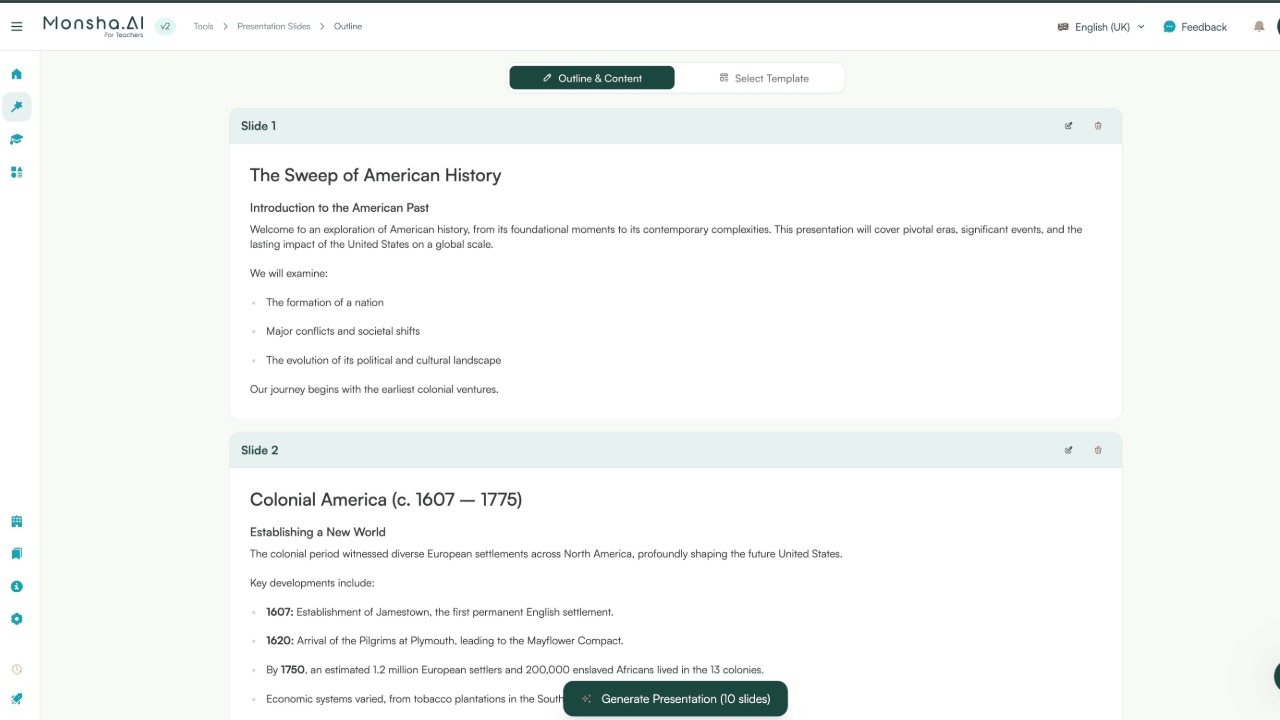
Once you’re satisfied with the content, you can generate the final presentation.

But there’s even more power in your hands! Once you generate the presentation, you can:

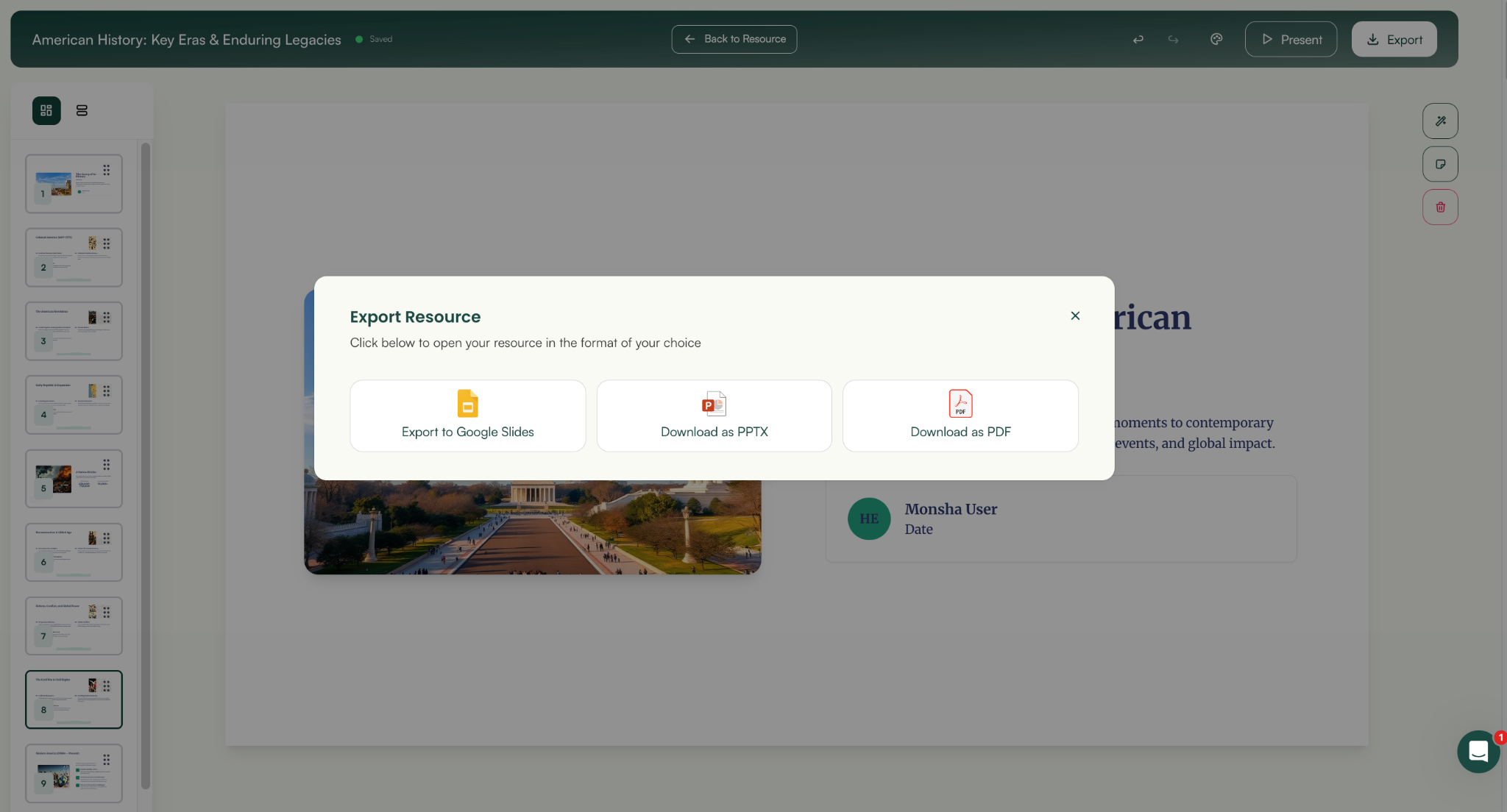
You can always access your presentation later from your Monsha account.
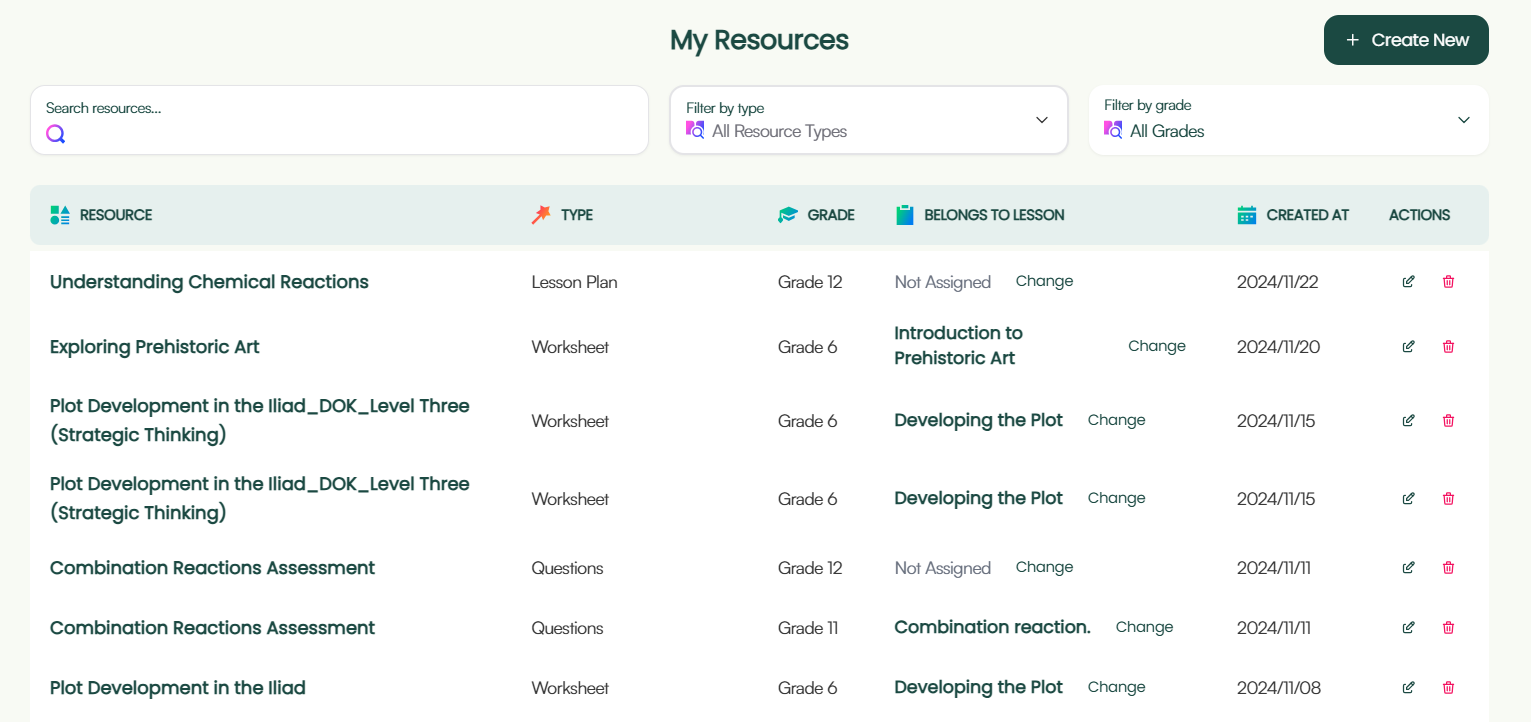
Easy, right? By the way, while we've focused on online articles or web links in this tutorial, you can create curriculum-aligned presentation slides from any source materials with Monsha.
Now, let’s move on to alternative methods.

For this to work, you’ll need access to the ChatGPT-4o model because GPT-3.5 can’t read external links or YouTube videos, and GPT-4 can be hit or miss.
Here’s a step-by-step guide:
1. Sign in to your ChatGPT console and make sure you’ve selected the GPT-4o model.
2. Now start prompting. There’s no one way to approach this, but a good first step is to ask ChatGPT to generate slide titles and an outline for the presentation. This will help you visualize the overall structure of the presentation.
You are an expert teacher and educator, skilled at creating effective and detailed resources for your students.
Based on the content of the webpage provided below, generate slide titles and an outline for a 10-slide presentation on Ancient Egypt for Grade 7.
Webpage content: [insert_URL_here]
3. Next, you can prompt ChatGPT to expand on each slide. Specify how much detail you want for each one and keep it aligned with the students’ level of understanding.
For each slide in the outline, generate 3-4 bullet points summarizing the main ideas.
Keep the language simple for Grade 7 students.
4. Ask ChatGPT to recommend images, diagrams, or charts to enrich the visual aspects of the presentation. This will help bring the topic to life for the students.
Suggest images, diagrams, or charts that can be used on the slides to illustrate Ancient Egyptian daily life and inventions.
5. You can make the presentation more dynamic by including interactive questions or activities. This helps engage students and make the lesson more memorable.
Include 2-3 questions or interactive activities (e.g., small group discussions or short quizzes) that will engage Grade 7 students on Ancient Egyptian inventions.
6. Additionally, you can prompt ChatGPT to suggest educational videos or articles that students can use to explore the topic further. This gives students the opportunity to self-study and dive deeper into the subject.
Suggest some additional educational videos, articles, or study materials on Ancient Egypt that students can use for self-study. Focus on resources that are appropriate for Grade 7 learners.
7. Finally, download it as a doc, pdf or ppt file:
Turn the whole presentation into a downloadable PPTX file and give me the download link.
You can reduce the number of follow-ups though by using a more comprehensive, structured AI prompts for presentations.
If you don’t have access to ChatGPT 4o, or somehow even GPT 4o can’t read your URL, here’s a workaround you can use in ChatGPT 3.5, GPT4, Copilot or Claude:
Feel free to try both of these methods and see what works best for your workflow. You can even check out other AI presentation makers for teachers.
Pretty sure you’ll find Monsha to be the ideal choice, not because we’re biased, but because we designed Monsha to give teachers an easy, iterative, and super-quick way to create just-right resources.

You can convert an online article into a presentation by using an AI presentation generator that accepts a URL, pasted text, or uploaded document. These tools automatically summarize the article, extract key points, and structure them into slide titles and bullet points. The best AI tools also let you edit the content, adjust slide flow, and add visuals before exporting the presentation.
The best AI tool to generate presentations from websites is one that can read live URLs, understand long-form content, and turn it into structured, classroom-ready slides. Look for tools that support URL input, slide editing, and exports to PPT or Google Slides. Generic AI chatbots can help, but dedicated AI presentation makers produce more usable slide decks.
Yes, AI can generate PowerPoint slides from a blog or web page. Many AI slide generators like Monsha convert articles into slide outlines and let you export them as PowerPoint files. Instead of manually copying content, AI automatically creates slide headings, bullet points, and summaries based on the original webpage.
AI-generated presentations are generally accurate for factual and well-structured articles, but they still require review. AI summarizes content based on patterns, so teachers should always scan slides for missing context, oversimplification, or formatting issues. The best workflow is to let AI generate 80% of the presentation, then refine it using your teaching expertise.
Yes. Most modern AI presentation tools like Monsha allow you to generate slides from PDFs, research papers, reports, and textbooks. You can upload the file or paste extracted text, and the AI will convert the content into a structured presentation with key points, explanations, and slide sections.
ChatGPT is useful for creating slide outlines or summaries, but a dedicated AI presentation generator is better for full slide creation. Presentation-specific tools handle slide structure, formatting, visuals, and exports, things general AI tools don’t manage well. Many educators use ChatGPT for drafting ideas and a presentation tool to finalize slides.
Yes, many AI tools are designed specifically to create student-friendly presentations. They simplify language, break content into digestible slides, and align material for classroom use. Some tools even let teachers adjust grade level, tone, or learning objectives to better match student needs.
Using AI, you can generate a presentation from an article in under 5 minutes. The AI handles summarization, slide structure, and formatting instantly. Editing and customization may take a few extra minutes, but it’s significantly faster than building slides manually from scratch.
Yes. Editing is a crucial part of the process. Good AI presentation tools allow you to edit text, rearrange slides, add tables or images, and refine explanations before exporting. AI gives you a strong starting point, but teachers stay in full control of the final presentation.
Some AI presentation generators offer free plans with limitations, while others require a subscription for exports or advanced features. Free tools are useful for testing, but paid versions usually offer better slide quality, customization, and export options for real classroom use.

AI in Education Content
Pooja Uniyal works closely with teachers and schools to understand and guide how AI is being used in real classrooms today. Her work at Monsha focuses on capturing practical teaching workflows and turning them into clear, usable guidance for educators exploring AI in their daily planning.
Join thousands of educators who use Monsha to plan courses, design units, build lessons, and create classroom-ready materials faster. Monsha brings AI-powered curriculum planning and resource creation into a simple workflow for teachers and schools.
Get started for free